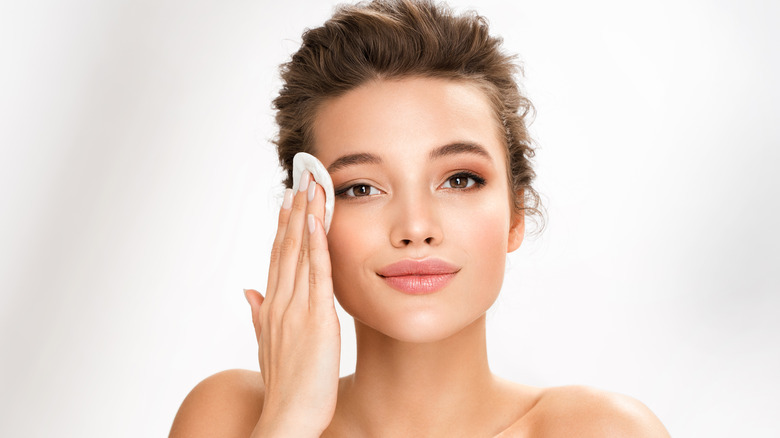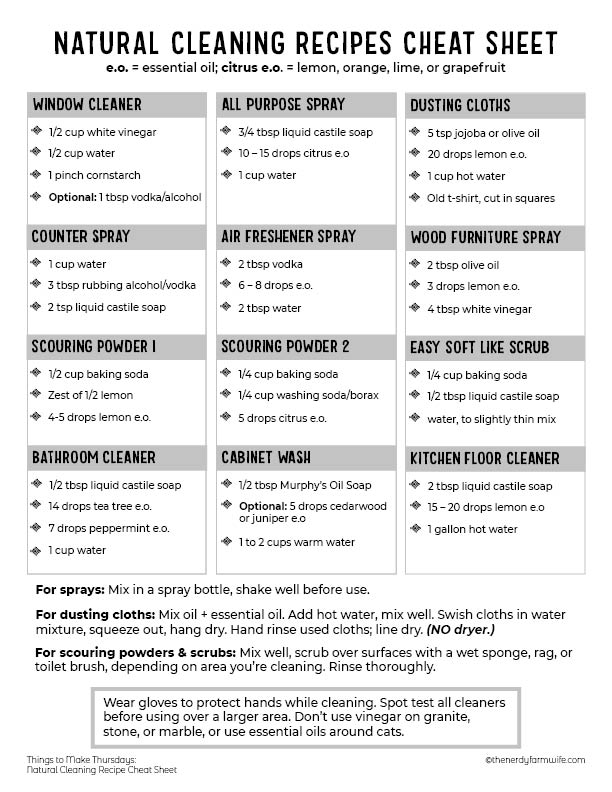Washing your face every night is a non-negotiable for healthy skin, but let’s be honest, sometimes life gets busy. Makeup remover wipes offer a convenient way to swipe away the day, but can they truly cleanse without compromising your complexion? Absolutely! This guide dives into 15 of the best makeup remover wipes formulated to remove even long-wearing makeup while keeping your skin clear, refreshed, and glowing. Whether you prioritize gentle cleansing, budget-friendly options, or targeting specific skin concerns, we’ve got you covered. So, ditch the panda eyes and hello to a clear, radiant visage – all with a convenient wipe!
OUR TOP PICKS
CERAVE HYDRATING MAKEUP REMOVING PLANT-BASED WIPES
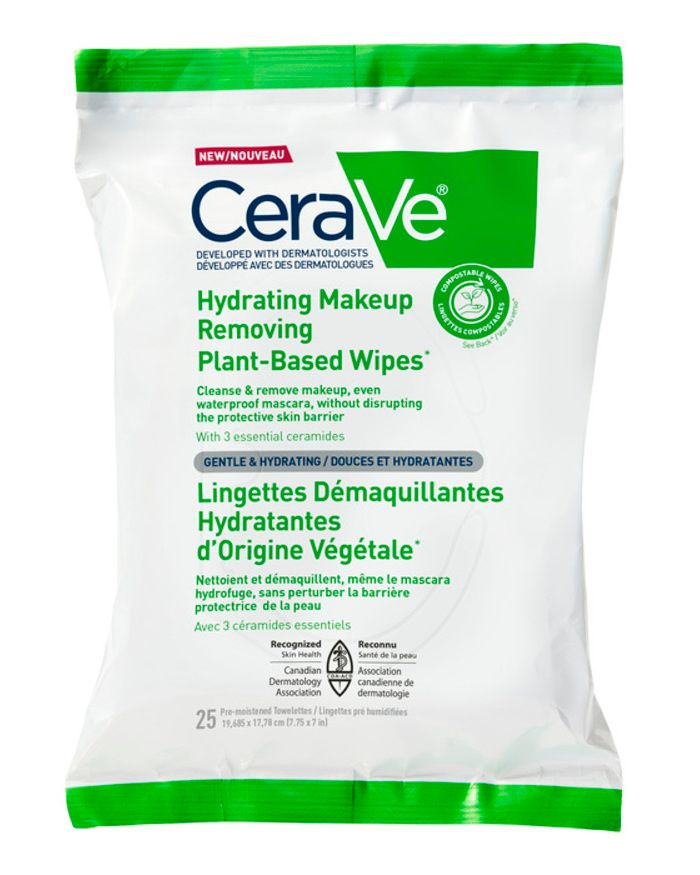
For those seeking a wipe that prioritizes both makeup removal and hydration, CeraVe Hydrating Makeup Removing Plant-Based Wipes are a gentle giant. Developed by dermatologists, these wipes pack a powerful punch against dirt, oil, and even waterproof mascara. The key lies in their hydrating formula. Hyaluronic acid and ceramides work in tandem to attract and retain moisture, ensuring your skin feels clean, comfortable, and never tight after wiping. An added bonus: the wipes themselves are 100% plant-based, fragrance-free, and won’t clog pores. Plus, they’re biodegradable, making them an eco-friendly option. Ideal for sensitive skin and those who prioritize a balanced moisture level, CeraVe wipes deliver effective cleansing without compromising hydration.
BURT’S BEES FACIAL CLEANSING TOWELETTES

Burt’s Bees Facial Cleansing Towelettes cater to those who want a natural approach to makeup removal. These wipes are infused with 99.7% natural origin ingredients, including soothing aloe vera and witch hazel. This gentle formula effectively removes light to moderate makeup while cleansing the skin. Free of harsh chemicals like parabens, sulfates, and phthalates, Burt’s Bees wipes are suitable for all skin types, even sensitive ones. While they might not tackle heavy-duty makeup as effectively as some other options, they are a great choice for everyday cleansing or for those who prioritize natural ingredients in their skincare routine. The wipes are also available in different varieties, like sensitive skin or hydrating options, allowing you to choose the ones that best suit your needs.
CLE DE PEAU MAKEUP CLEANSING TOWELETTES

Indulge in a touch of luxury with Clé de Peau Beauté’s Makeup Cleansing Towelettes. These wipes promise to whisk away even long-wearing and waterproof makeup in one effortless sweep. The secret lies in their water-based cleansing solution infused with skincare ingredients. This gentle formula effectively removes makeup while leaving your skin feeling clean, fresh, and surprisingly hydrated – it even benefits your eyelashes! Clé de Peau’s ResiliLock technology, a brand innovation, is claimed to support your skin’s natural ability to retain moisture throughout the cleansing process. These wipes are dermatologist and ophthalmologist tested, and non-comedogenic so they won’t clog pores. While a touch pricier than some drugstore options, Clé de Peau Makeup Cleansing Towelettes offer a pampering, effective solution for those seeking a luxurious makeup removal experience.
ALMAY CLEAR COMPLEXION MAKEUP REMOVER

Almay Clear Complexion Makeup Remover Wipes are a drugstore-friendly option designed for those with oily or acne-prone skin. These wipes are formulated with witch hazel, a natural astringent known to tighten pores and reduce excess oil. The gentle formula effectively removes makeup, dirt, and impurities, leaving your skin feeling clean and refreshed without any greasy residue. Almay Clear Complexion wipes are hypoallergenic and fragrance-free, making them suitable for sensitive skin. They are also oil-free and non-comedogenic, meaning they won’t clog your pores, which is a major benefit for those struggling with breakouts. If you’re looking for a convenient and affordable way to remove makeup while keeping oily skin under control, Almay Clear Complexion Makeup Remover Wipes are worth considering.
CLINIQUE MICELLAR CLEANSING TOWELETTES
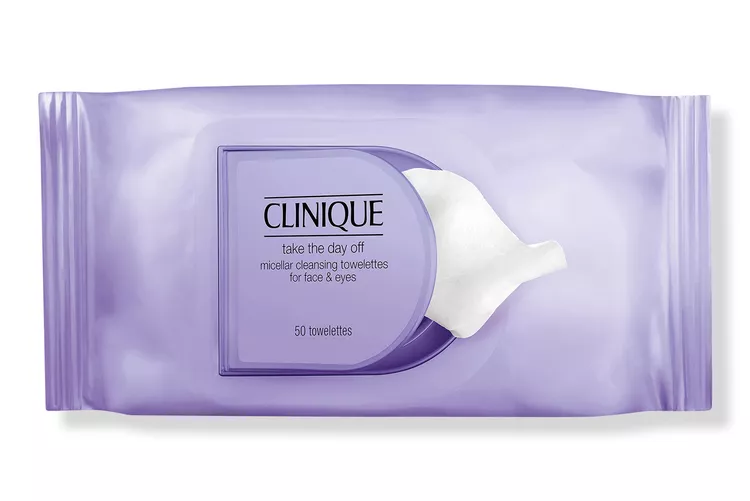
Clinique’s Take the Day Off Micellar Cleansing Towelettes are a popular choice for a reason. They effectively remove all traces of makeup, including long-wearing and waterproof formulas, without any harsh rubbing. The secret lies in their micellar technology. Micelles are tiny cleansing agents suspended in a solution that act like magnets, attracting dirt, oil, and makeup without stripping your skin’s natural moisture. This makes them suitable for all skin types, even sensitive ones. Clinique’s micellar wipes are fragrance-free and ophthalmologist-tested, ensuring a gentle yet effective cleanse around the delicate eye area. Plus, the wipes themselves are soft and textured to thoroughly remove makeup without irritating the skin. Whether you’re on the go or just looking for a convenient way to remove your makeup, Clinique’s Take the Day Off Micellar Cleansing Towelettes are a reliable and gentle option.
SIMPLE KIND TO SKIN CLEANSING WIPES

Simple Kind to Skin Cleansing Wipes are a fragrance-free and gentle option ideal for everyday makeup removal, even for sensitive skin. These wipes are dermatologist-approved and hypoallergenic, free of harsh chemicals, artificial colors, and perfumes that can irritate the skin. The key lies in their micellar technology. Tiny micelles suspended in the solution act like magnets, attracting dirt, oil, and makeup without stripping away your skin’s natural moisture. This makes them suitable for all skin types, even those prone to dryness or irritation. Simple Kind to Skin wipes are effective at removing light to moderate makeup, leaving your skin feeling clean, refreshed, and comfortable. Plus, they’re available in biodegradable options for those who want to be eco-conscious. Overall, Simple Kind to Skin wipes offer a gentle, fragrance-free, and affordable solution for everyday makeup removal.
SHISEIDO REFRESHING CLEANSING SHEETS

Shiseido Refreshing Cleansing Sheets offer a convenient and gentle solution for removing makeup and impurities throughout the day. Made with 100% ultra-soft cotton, these wipes are comfortable to use and won’t irritate even sensitive skin. The pH-balanced formula effectively whisks away dirt, oil, and makeup, including light makeup formulations, without disrupting your skin’s natural moisture balance. This makes them ideal for on-the-go cleansing or for quick makeup touch-ups throughout the day. While they might not tackle heavy-duty makeup as effectively as some other options on this list, Shiseido Refreshing Cleansing Sheets are a great choice for a gentle cleanse that leaves your skin feeling refreshed and comfortable.
SKINFOOD RICE BRIGHTENING CLEANSING TISSUE
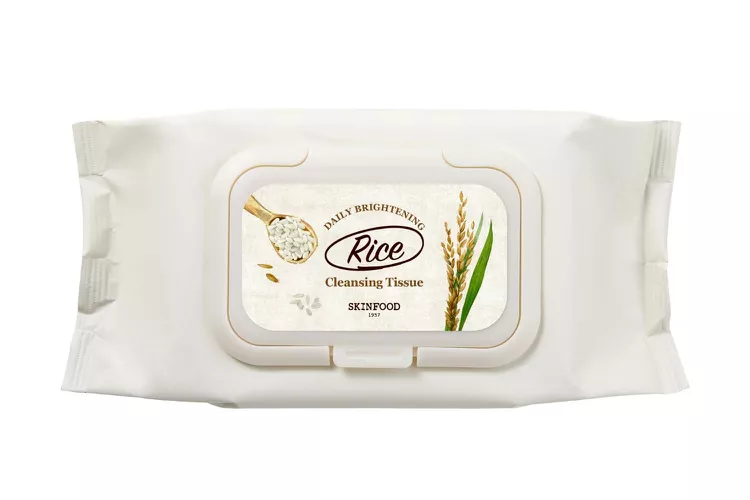
Skinfood Rice Brightening Cleansing Tissue promises to cleanse and brighten your skin in one swipe. These wipes are infused with Odae rice bran water, a Korean skincare staple known for its brightening and nourishing properties. Rice bran water is rich in vitamins and minerals, which can help even skin tone and promote a radiant complexion. The gentle formula effectively removes makeup, dirt, and impurities, leaving your skin feeling clean, refreshed, and – according to the brand – brighter. Skinfood Rice Brightening wipes are suitable for all skin types, including sensitive skin, thanks to their fragrance-free and hypoallergenic formulation. While they might not be as heavy-duty as some makeup removers, they are a convenient option for daily cleansing or for those who prioritize a touch of brightening alongside their makeup removal routine.
CETAPHIL GENTLE WATERPROOF MAKEUP REMOVER

Cetaphil Gentle Waterproof Makeup Remover lives up to its name, offering a fragrance-free and oil-free solution for removing even stubborn waterproof makeup. This gentle formula is kind to sensitive skin, yet effective at dissolving makeup, dirt, and oil without leaving any greasy residue. Cetaphil’s expertise in skincare for sensitive skin shines through with this makeup remover. It’s non-comedogenic, meaning it won’t clog pores, and ophthalmologist tested to ensure safety around the eyes. While it might not be as luxurious as some high-end options, Cetaphil Gentle Waterproof Makeup Remover is a reliable and effective choice for those with sensitive skin who wear waterproof makeup.
SKYN ICELAND GLACIAL CLEANSING CLOTHS

Skyn Iceland Glacial Cleansing Cloths promise to refresh, soothe, and purify your stressed skin with a single swipe. These wipes are infused with Icelandic glacial waters, known for their mineral richness, and beneficial natural extracts. This gentle formula effectively removes makeup, dirt, oil, and other impurities without disrupting your skin’s natural moisture balance. They leave your skin feeling clean and refreshed, ideal for those with normal, oily, or combination skin. While Skyn Iceland doesn’t explicitly mention if these wipes tackle waterproof makeup, they are a great option for everyday makeup removal or for a quick refresh on the go. The clean scent adds a touch of luxury, and the wipes are cruelty-free and vegan, catering to those with specific ethical preferences.
URSA MAJOR FACE WIPES

Ursa Major’s Essential Face Wipes are a multi-tasking marvel designed for busy lifestyles. These individually wrapped, biodegradable bamboo wipes boast a 4-in-1 formula that cleanses, exfoliates, soothes, and hydrates in one swipe. Infused with botanical extracts and natural ingredients like aloe vera and witch hazel, they effectively remove makeup, dirt, and oil without stripping your skin’s natural moisture. Ursa Major caters to those seeking natural skincare solutions – their wipes are free of parabens, sulfates, synthetic fragrances, and artificial colors. Plus, the refreshing aroma with orange, lavender, and fir adds a touch of aromatherapy to your cleansing routine. Ideal for all skin types, even sensitive ones, Ursa Major wipes are a convenient and effective option for achieving a clean, refreshed, and balanced complexion on the go.
COLORESCIENCE HYDRATING CLEANSING CLOTHS
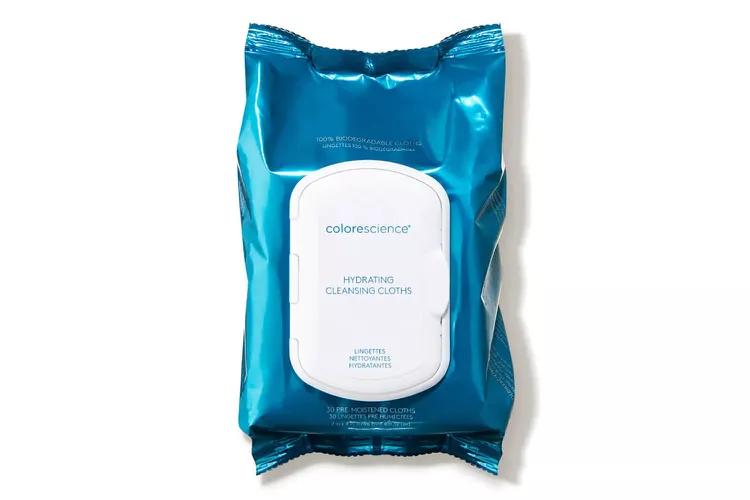
Colorescience Hydrating Cleansing Cloths are a gentle yet effective option for removing makeup and refreshing your skin on the go. These double-sided wipes offer the best of both worlds: a soft side for gently sweeping away impurities and excess oil, and a textured side for tackling tougher waterproof makeup. Free of fragrance, colorants, and harsh chemicals, they’re suitable for all skin types, including sensitive skin. The key to their hydrating properties lies in hyaluronic acid and coconut extract, which work together to attract and retain moisture, leaving your skin feeling clean, soft, and comfortable – no tight or dry feeling after wiping. Plus, the cloths themselves are biodegradable, making them an eco-conscious choice for those who want to be kind to their skin and the planet.
HONEST BEAUTY MAKEUP REMOVER WIPES
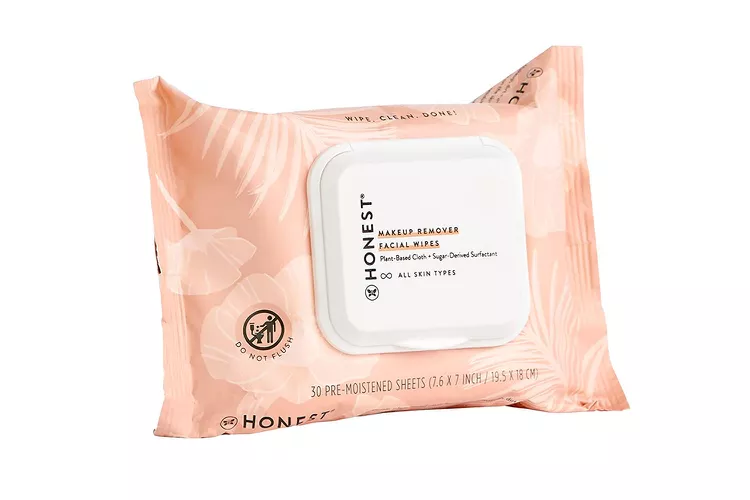
Honest Beauty Makeup Remover Wipes are a convenient and effective solution for everyday makeup removal, even for those with sensitive skin. Made with plant-derived ingredients and free of harsh chemicals like fragrance, alcohol, and sulfates, these wipes gently dissolve dirt, oil, and even waterproof makeup without irritating the skin. Hyaluronic acid, a hero ingredient known for its hydrating properties, helps keep your skin feeling soft and supple after wiping. Honest Beauty wipes are also non-comedogenic, meaning they won’t clog your pores, which is a major plus for those prone to breakouts. Available in a pack of 90 wipes, they offer a long-lasting and affordable option for your makeup removal routine.
MAKEUP BY MARIO MAKEUP REMOVER WIPES

Designed by celebrity makeup artist Mario Dedivanovic, Makeup By Mario Gentle Makeup Remover Wipes promise to remove makeup without compromising your skin’s clarity. These biodegradable wipes are infused with cucumber water, a natural ingredient known for its refreshing and hydrating properties. This gentle formula effectively dissolves makeup, dirt, and impurities, leaving your skin feeling clean and comfortable. Makeup By Mario wipes are fragrance-free and oil-free, making them suitable for all skin types, even sensitive ones. The resealable package allows for easy storage and keeps the wipes fresh, perfect for on-the-go makeup removal or quick cleansing throughout the day.
NEUTROGENA MAKEUP REMOVER ULTRA-SOFT CLEANSING TOWELETTES

Neutrogena Makeup Remover Ultra-Soft Cleansing Towelettes offer a convenient and effective solution for everyday makeup removal. These pre-moistened cloths are formulated to gently dissolve dirt, oil, and even waterproof makeup, leaving your skin feeling clean and refreshed. A key advantage is their ultra-soft, 100% plant-based cloths that feel comfortable on the skin and avoid any irritation. Neutrogena’s formula is also alcohol-free and fragrance-free, making them suitable for all skin types, even sensitive ones. Plus, the wipes are surprisingly effective at tackling waterproof mascara, a common challenge for makeup removers. Available in various pack sizes, Neutrogena Makeup Remover wipes are a well-rounded and affordable option for those seeking a gentle yet effective way to remove their makeup.
WHAT TO KEEP IN MIND
When choosing makeup wipes, consider how much makeup you typically wear. Heavy or full-coverage makeup, including waterproof formulas, requires micellar-based wipes that can effectively dissolve tough layers without causing irritation. For light makeup or a quick refresh, almost any makeup wipe will suffice.
Your skin type is also crucial when selecting makeup-removing wipes to avoid irritation. Many wipes are naturally exfoliating, making them suitable for oily skin. However, for dry or sensitive skin, look for wipes infused with hydrating ingredients like chamomile, oat, and pomegranate to soothe and moisturize.
If sustainability is a priority, you might want to reconsider using makeup wipes due to their single-use nature. While they are effective for the skin, they are not environmentally friendly. Fortunately, many brands now offer plant-based and biodegradable options to address this concern.
CONCLUSION
That concludes our list of 15 amazing makeup remover wipes formulated to keep your skin clear and radiant! Remember, the best wipes for you will depend on your specific skin type, makeup preferences, and budget. Whether you prioritize gentleness, powerful cleansing, or a touch of brightening, there’s a wipe out there to perfectly suit your needs. So ditch the raccoon eyes and hello to a clear, refreshed complexion – all with the convenience of a wipe! And remember, while wipes can be a handy solution, some makeup, especially heavy-duty or waterproof formulas, might require a double cleanse with a dedicated cleanser afterwards to ensure all traces of makeup and impurities are removed. For a truly clear and healthy complexion, make sure to follow up your makeup removal with your regular skincare routine.

